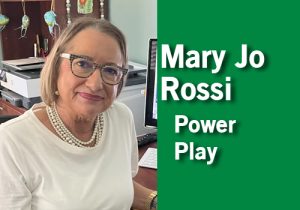Hefty lawsuits mar district council election process
 CONTRA COSTA COUNTY, CA (Sept. 19, 2024) – I’m not a big fan of district elections for city council.
CONTRA COSTA COUNTY, CA (Sept. 19, 2024) – I’m not a big fan of district elections for city council.
Large cities in California have had them for years, even decades. Los Angeles went from at-large to district elections in 1925, San Diego in 1932, San Francisco and San Jose in 1977.
Most cities in Contra Costa County have converted to district elections, with the exception of Clayton, Lafayette, Hercules, Orinda, Moraga, Pinole and Pittsburg. Some more willingly than others; most kicking and screaming at a process that’s been forced upon them.
This switch in representation in our state began with the California Voting Rights Act (CVRA) that Gov. Gray Davis signed into law in 2002. Its purpose was to encourage the election of minority candidates, who were underrepresented in areas throughout California.
In theory, district elections hoped to offer other benefits: A greater opportunity to get to know voters because the districts were smaller. Less expensive campaign costs, which might allow access to more candidates. A more responsive elected representative who could focus on a given district’s specific needs. It was also supposed to make it easier for newcomers to get elected.
In Contra Costa County and most cities throughout California, the switch from at-large to district council elections began with a little-known Malibu attorney by the name of Kevin Shenkman. He used language in the CVRA to go city-to-city, threatening lawsuits if they didn’t institute district elections.
Cities that fought Shenkman in court invariably lost and paid millions in legal fees. In the Bay Area, Santa Clara battled Shenkman and lost its CVRA lawsuit, costing the city $3.8 million in legal fees – while still having to split the city into six districts.
No city in California was willing to risk losing and paying millions in legal fees … so every city Shenkman contacted agreed to form districts for city council elections. And each city that acquiesced paid Shenkman his standard fee of $30,000.
While the intentions for passing the CVRA were admirable, the threats to cities by high-paid attorneys like Shenkman were not. In my opinion, the creation of district elections in cities in our region has done more harm than good.
For one, it has always been a challenge to find qualified, competent candidates for city council – even when elections were at-large. Now, many of the district candidates for office lack experience, especially when it comes to policymaking. In some districts, we can’t attract qualified candidates, giving an incredible advantage to incumbents.
District elections have also brought more power to special interest groups who want a say in who is elected to a seat. The cost to “run a candidate” is much less in a district than in an at-large seat. If you’re a “special interest,” it becomes much easier to influence who wins in a district election.
Then there’s this: As a voter, don’t you want a say in everyone who represents your city – not just one candidate who’s in your district? I know I do.

Mary Jo Rossi
Mary Jo Rossi is a local political strategist managing state/local campaigns for more than 40 years and the owner of Rossi Communications in Concord, CA.
